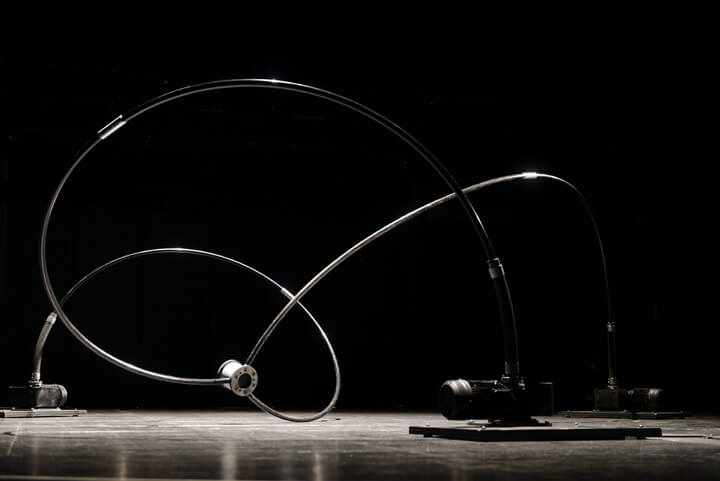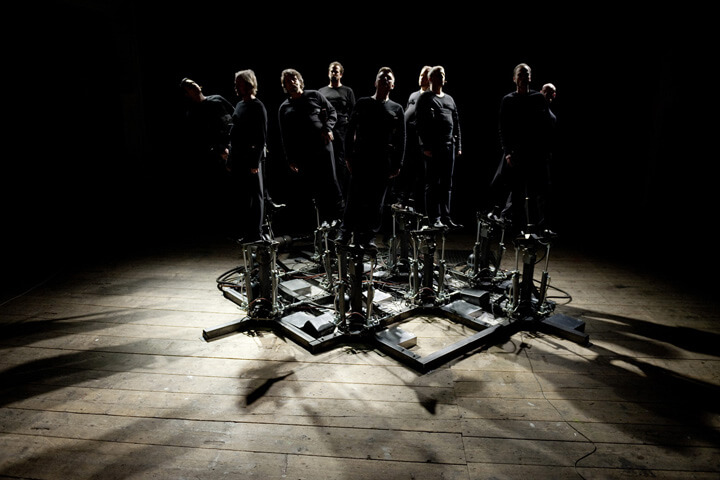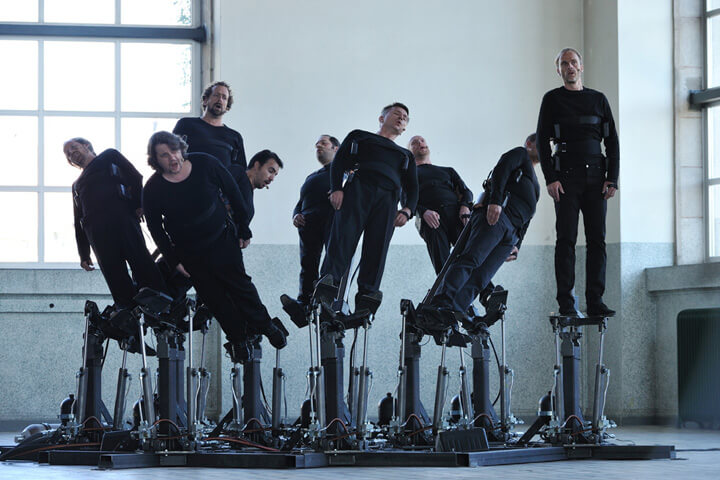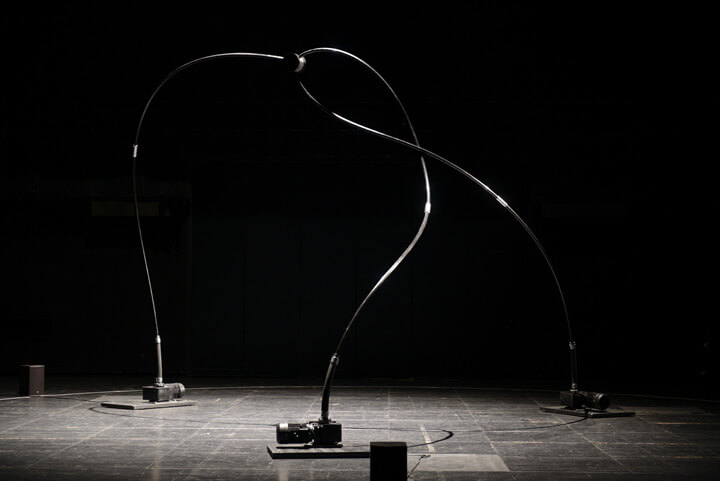Words by Meritxell Rosell
In an age when the virtual world is becoming so prominent in our lives, especially in Western cultures, where for example, fewer and fewer activities and jobs involve any physical activity (like agriculture or manufacturing), it’s particularly interesting to see work that focuses on the mechanical and physical. Cod.Act are one of the most renowned names working in new media and kinetic art nowadays with works including performances and complex interactive installations.
Cod.Act is the creation of the two Décosterd brothers, André, a musician, composer and programmer, and a specialist in sound applications and algorithmic composition, and Michel, an architect who specialised in the treatment of plastic and self-taught mechanical engineer, and it emerged from their obsession with sound and mechanical movement.
The work of the Décosterd brothers also finds inspiration in science and the harmonic nature of movement and sound which drives their explorations into finding the perfect fusion of both. In pieces like the series Siliknost (I, II, III), Hotschkuss and Ex Pharao, human physical activity is the force behind the performances and installations.
Other pieces are pure explorations of movement, form and mechanical energy. Like Cycloïd, a captivating kinetic sound sculpture, which traces the space of sound orbits creating unique movement and sounds.
Or Cod.Act’s latest creation, Nyloïd, which was exhibited at Sónar festival in Barcelona this year, is a magnificent tripod-shaped sound sculpture, consisting of three nylon limbs of 6 metres in length. Like a sort of gigantic Opiliones (the order of long-legged spiders) the graceful movements and sounds of the piece emulate the organic and the living.
Cod.Act, with their utterly elegant and mesmerising productions, aim to challenge the audience with a reflection on the interactions between sound, movement and their driving forces.
Your work involves sound, technology (engineering, architecture), and art (sculpture, performance). When and how did the fascination with them come about?
Myself as a musician and my brother as an architect, have always been fascinated by the technological part of our respective work. Our taste for machines and technology certainly comes from when we were children because we were stimulated a lot in this direction.
Our father was an engineer in electronics and he very often suggested and helped us, realise electrical, electronics and computing experiments. On several occasions, we were even allowed to work in his laboratory, we were fascinated by this universe.
We always kept this interest in sciences and construction. Very often our ideas are inspired by scientific phenomena, and we like developing and building sound machines. That is how we developed our Cod.Act language.
What are your aims as a sound artist working between technology and art?
After my training as a jazz musician, I became interested in sound and electroacoustic music. I’ve always had an acute curiosity for sound phenomena, and the why behind sound and acoustic phenomena. Thus I’ve specialised in sound synthesis and especially synthesis based on sound analysis.
This led us to create interactive systems that generate sound, where the synthesis can be controlled at each step. The most interesting part of our work is trying to give to our kinetic sculptures a musical or vocal behaviour that is as organic as possible. This work constitutes a new stage in our research. It’s the result of new investigations, each within his domain, on plastic and sound organicity.
For Nyloïd, in which you explore organic mechanical complex movements, you carried out a lot of research (materials, kinetic energies, sound). What are the biggest challenges you face in the development of your projects?
Regarding the mechanical and plastic aspects, we try to create mechanical devices that have the capacity to move in an organic, natural, random and harmonious way. This orientation began a few years ago with the sculpture Cycloïd-E. Regarding the musical aspect, we try to create an interactive organic sound synthesis.
We are interested in the human voice, especially in the spoken voice. We noticed that the human voice is always fascinating; it exercises on us an irresistible attraction and brings a very concrete and emotional dimension to the musical language.
Our biggest challenge is trying to fuse both aspects, sound and movement, to find a relationship between these two aspects, and at the same time, in a subtractive approach, to reach simplicity and radicalism in our expression.
Solitude or loneliness, how do you spend your time alone?
It is important to know that we both work on the same projects but most of the time alone. We both do experiments in our own atelier, I create acoustic machines and my brother researches movement and mechanics.
We are both passionate about what we do and spend a lot of time, in our respective ateliers experimenting with matter. We produce a new project by pooling the results of our research.
It works well because since the beginning we’ve always had the same tastes and the same way of seeing things, the same artistic language and expression.
What is your chief enemy of creativity?
To my mind, the worst enemies of creativity are fear of change, conformity and fear of criticism.
You couldn’t live without…
I couldn’t live without the possibility of creating music and without long walks in the mountains to keep things in perspective.










